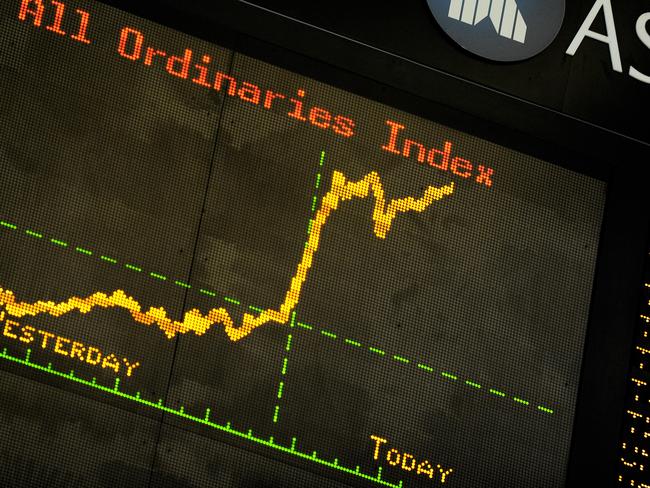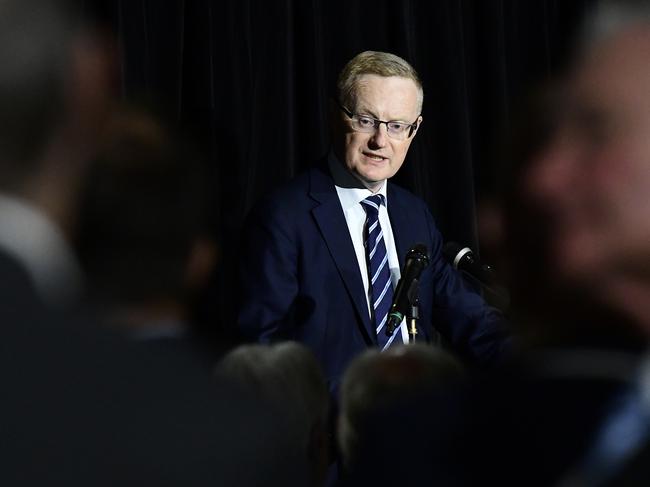Terry McCrann: Why surging share prices won’t sway the RBA
The stockmarket has soared to its highest point since the GFC yet the RBA is contemplating cutting its official interest rate to almost zero. Confused? Terry McCrann explains what to make of it all.

Business
Don't miss out on the headlines from Business. Followed categories will be added to My News.
CONFUSED? The share market has rocketed up to its highest point since the Global Financial Crisis — yet the economy is apparently in deep, deep trouble and the Reserve Bank is contemplating taking its official interest rate down almost to zero?
In more “normal” times a booming stock market usually signifies a booming economy, or indeed a too-booming economy. That forces the RBA to raise its rate to slow things down, hopefully without tipping us into recession. In 1990 its rate went all the way up to 18 per cent (now it’s 1.25 per cent) and in 2008 it went to 7.25 per cent.
The first episode did tip us into recession, indeed the worst recession since the Great Depression of the 1930s — the one Paul Keating said “we had to have”.
The second got swamped by the GFC, which hit from across the Pacific, and for a complex of reasons, mostly China, we ended up avoiding a recession.

Well, this time around, we haven’t had soaring rates — before the latest cut, the RBA rate had sat at 1.5 per cent since August 2016; and the economy has been in pretty good shape.
That is, until around the middle of last year. Since then, it’s barely paddled along just out of recession territory. Although bizarrely, it’s kept on creating jobs, and plenty of them — over 350,000 over the last year, and most of them — around 266,000 — full-time ones.
On one level I don’t find that too surprising. We used to fret about too-high wage rises. We coined the term “one man’s wage rise is another man’s job”. Now it would be more appropriate and probably also more correct to write “one man’s wage rise is another woman’s job”.
Well, whichever way, what we have now been seeing is the reverse of that: sustained very low wage rises have put more people into jobs.
And while, yes, those extra wage-earners are feeding more spending into the economy, the downside is that the already employed workers ain’t seeing their spending power boosted much — which is normally the dynamic that drives a booming economy.
The sustained very low home loan interest rates have squared the circle to some extent. While workers haven’t got big pay rises, low rates have left more money in their bank accounts or accelerated loan repayments.
You put all this together and the state of play in the economy makes sense — sluggish growth, low wage rises and inflation, yet solid jobs growth. Plus some other important factors like high immigration and the booming property and construction sectors.
It could also logically explain the share market. High interest rates make bank deposits and other forms of interest-earning investments attractive and shares less so. Low interest rates do the opposite. We have low interest rates, so that makes shares (and property) attractive.
Well, yes. But only up to a point. Ultimately, company share prices are set by their profits — and their ability to pay dividends. Companies don’t generally make good profits — and more importantly anticipate strong and rising profits into the future — in an economy that’s struggling.
Take the most obvious sector — the big banks. Their share prices have risen strongly, despite the permanent costs of the banking royal commission, the negative effect low interest rates will have on their profits, and the prospect of rising (hopefully, not soaring) bad debts.
Yes, it’s the old story that the dividend on a bank share looks more appealing than the — for many — zero rate on a bank deposit. Except, that you are guaranteed to get 100c in the dollar back on the deposit, not so with the share.
Well that’s all clearly part of the answer; the biggest part is simply that our market has been dragged up by Wall St. Like every market in the world.
I was amused to read on the front page of the Financial Review how our market had outperformed even Wall St. This year we’d gone up 15.9 per cent, Wall St only 15.2 per cent.
Apart from the fact that such minor “outperformance” is statistically insignificant, the writer and the paper have missed the more fundamental point. The only reason we’ve gone up the 15.9 per cent is precisely because Wall St’s gone up 15.2 per cent.
How much do they think our market would have gone up if Wall St had, say, gone sideways? Or indeed, gone down?
Wall St’s gone up because the US, unlike Australia, has had the combination of a strong economy and low interest rates. And, far from the Fed — their version of our RBA — threatening to raise rates to slow things down, it’s promising the exact opposite.
Bottom line: what the Fed does with US rates and what happens on Wall Sat will determine what happens to our share market. This will be quite independent of what happens to our economy, what our RBA does with our rates, and what Canberra does or does not do.



